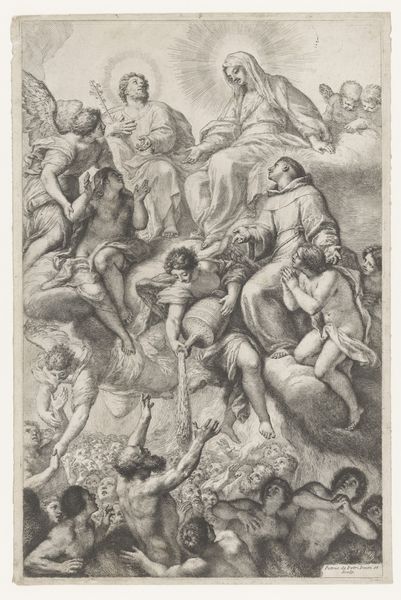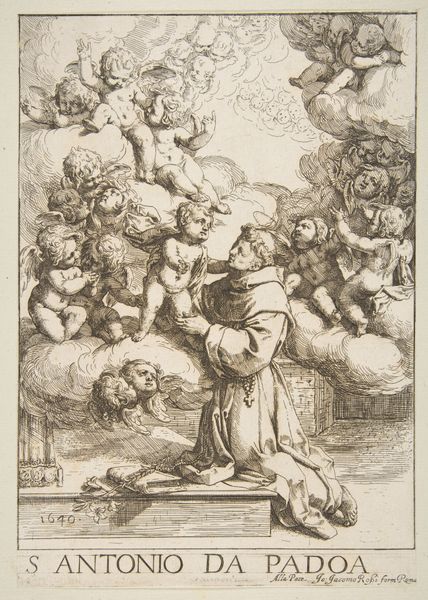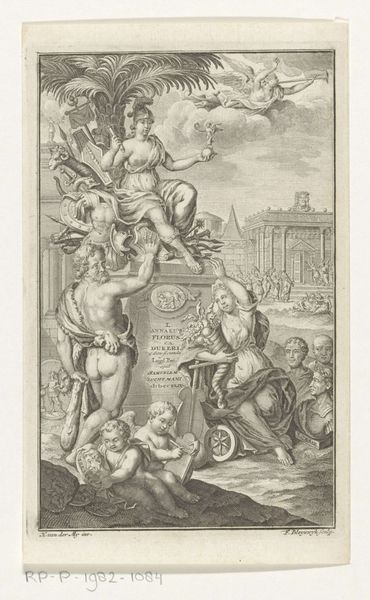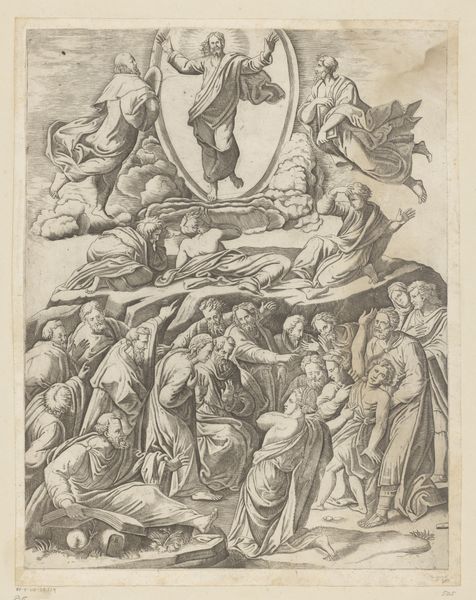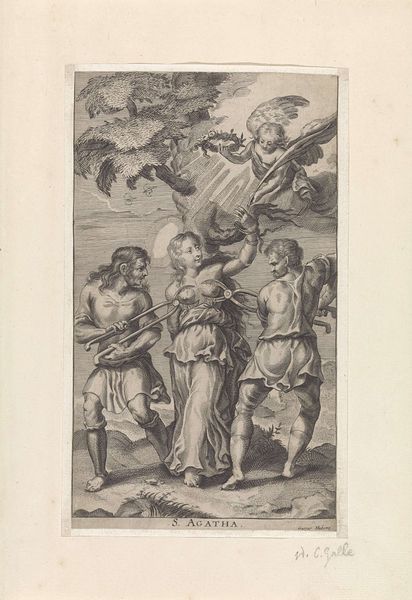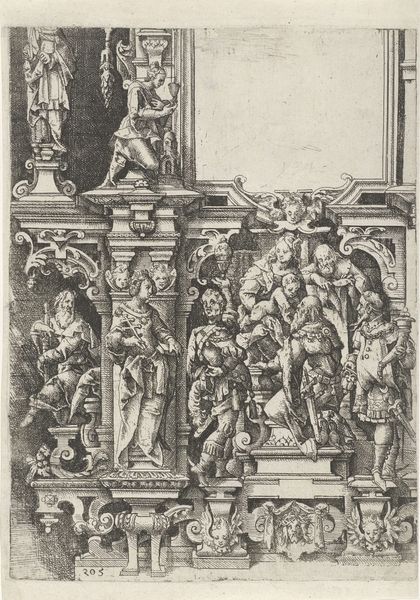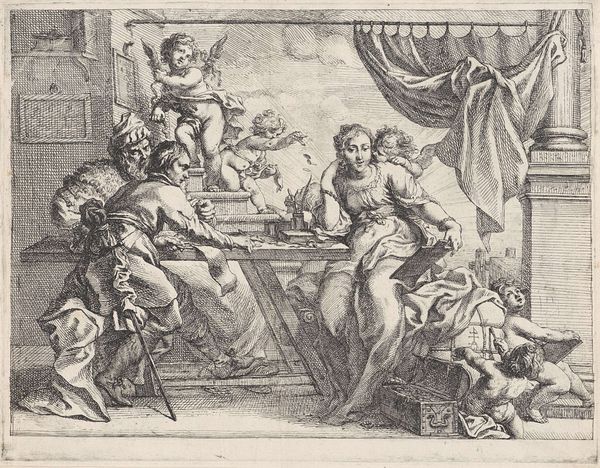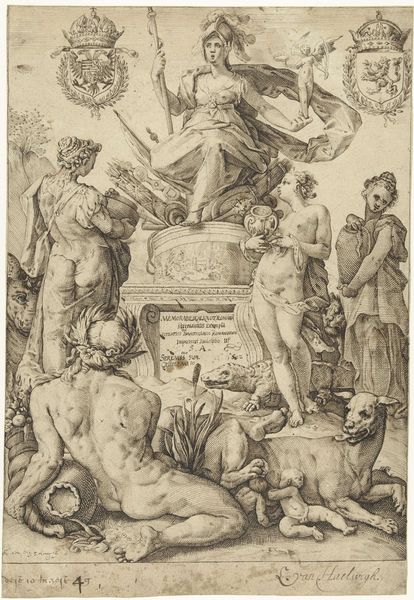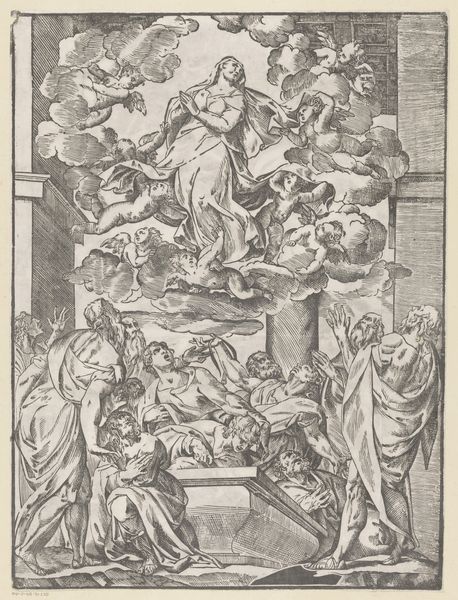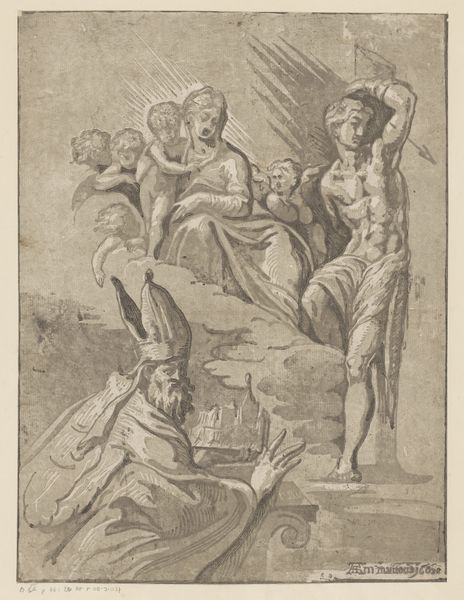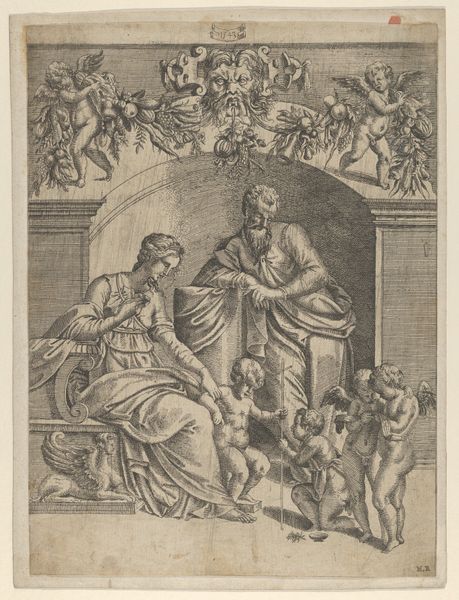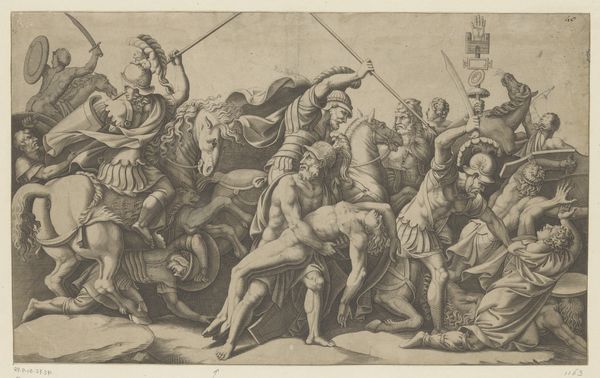
print, etching
#
portrait
#
baroque
# print
#
etching
#
figuration
Dimensions: height 265 mm, width 223 mm
Copyright: Rijks Museum: Open Domain
Curator: Wow, talk about heavenly. Is it just me, or does this print radiate some serious Baroque exuberance? Editor: Indeed, the etching 'Madonna met kind' by Cornelis Schut, made sometime between 1618 and 1655, is deeply embedded in its cultural moment. I find the theatrical framing, almost overflowing with cherubic figures, very telling. Curator: Telling how? I mostly get a sense of lightness, almost comical chaos. These cherubs seem ready to burst out of the frame. Is that just the etching technique, or is something else happening here? Editor: The ‘chaos’, as you call it, is carefully constructed. Baroque art aimed to evoke emotion and awe. The multitude of cherubs emphasizes the Madonna's divine status, reflecting a patriarchal celestial hierarchy where she is seen as a holy vessel more than a fully embodied human. It’s quite striking that even divine feminine representation is mediated by masculine entities here. Curator: Oh, I see what you're getting at. So, not so light after all. Though, look at how Schut handled the light on Mary’s face. It’s not overtly soft or overly severe. There’s such quiet strength in that gaze that feels very real to me. Maybe the cherubs are the noise around her power? Editor: That "noise," I would argue, actually *defines* what kind of power is being represented. We can see how traditional notions of the maternal divine get re-inscribed into established political hierarchies that used female figures to reify dominant narratives. Curator: It's amazing how much shifts when you change your perspective. I walked in seeing bouncy putti, but now I realize they’re part of the larger messaging about power and gender that this Baroque image is advancing. Editor: Exactly, even these small images hold immense weight. It's crucial to examine how cultural objects engage in complex dialogues within specific socio-political climates. They’re never just simple illustrations.
Comments
No comments
Be the first to comment and join the conversation on the ultimate creative platform.
